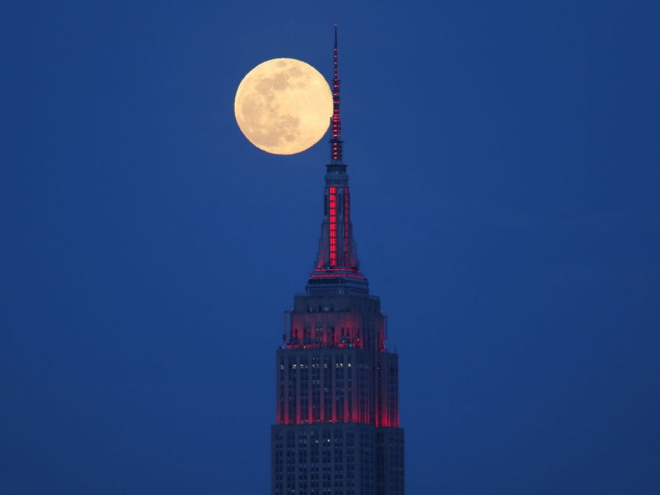Before the holidays from April 30 to May 1, Vietnamese astronomy enthusiasts have the opportunity to admire interesting natural phenomena.
After a long time, Vietnamese will have the opportunity to watch the Lyrid Meteor Shower (Thien Cam) on the night of April 22 and the dawn of April 23.
Lyriids are medium-sized meteor showers made up of dust particles from comet C / 1861 G1 Thatcher, discovered in 1861.
This star shower occurs from April 16 to 25 each year, reaching around 20 streaks / hour during peak hours. This meteor battle sometimes creates brilliant dust trails that last for a few seconds.
This year, however, the Lyrid Star Rain occurs almost on a full moon. Moonlight can dim starlight except for the brightest star trails. If you are patient, the observer may still encounter some clear light streaks.
Lyres can be seen in both hemispheres. In Vietnam, the best time to view is from 10:00 PM to 6:00 AM on the 23rd. Astronomy enthusiasts should choose a dark location with no light pollution for the best viewing conditions. Meteors will emanate from the constellation Lyra (Thien Cam), but can appear anywhere in the sky.
After the Lyrid, the Eta Aquariids meteor shower, which will peak in early May, is the most observable meteor shower in the southern hemisphere.
Also before the holiday season, Vietnamese will have the opportunity to observe the pink super moon. It is predicted to be the biggest and brightest super moon of this year.
A super moon is a full moon phenomenon that occurs closest to Earth in orbit. At that time, the Moon was brighter and larger than usual. In Vietnam, the brightest pink supermoon is around 10:00 p.m. on April 27, clearly visible to the naked eye.
 However, this super moon is not as pink as the name suggests. Initially, the pink supermoon was called the pink moon by Native American tribes because it appeared at the same time as the pink moss blooms, one of the first flowers to bloom in spring.
However, this super moon is not as pink as the name suggests. Initially, the pink supermoon was called the pink moon by Native American tribes because it appeared at the same time as the pink moss blooms, one of the first flowers to bloom in spring.
This moon phase also has many other names such as the rising grass moon, developing moon, and egg moon. Many coastal tribes call the fish moon because this is the time when the thick herring rises upstream to lay eggs.


